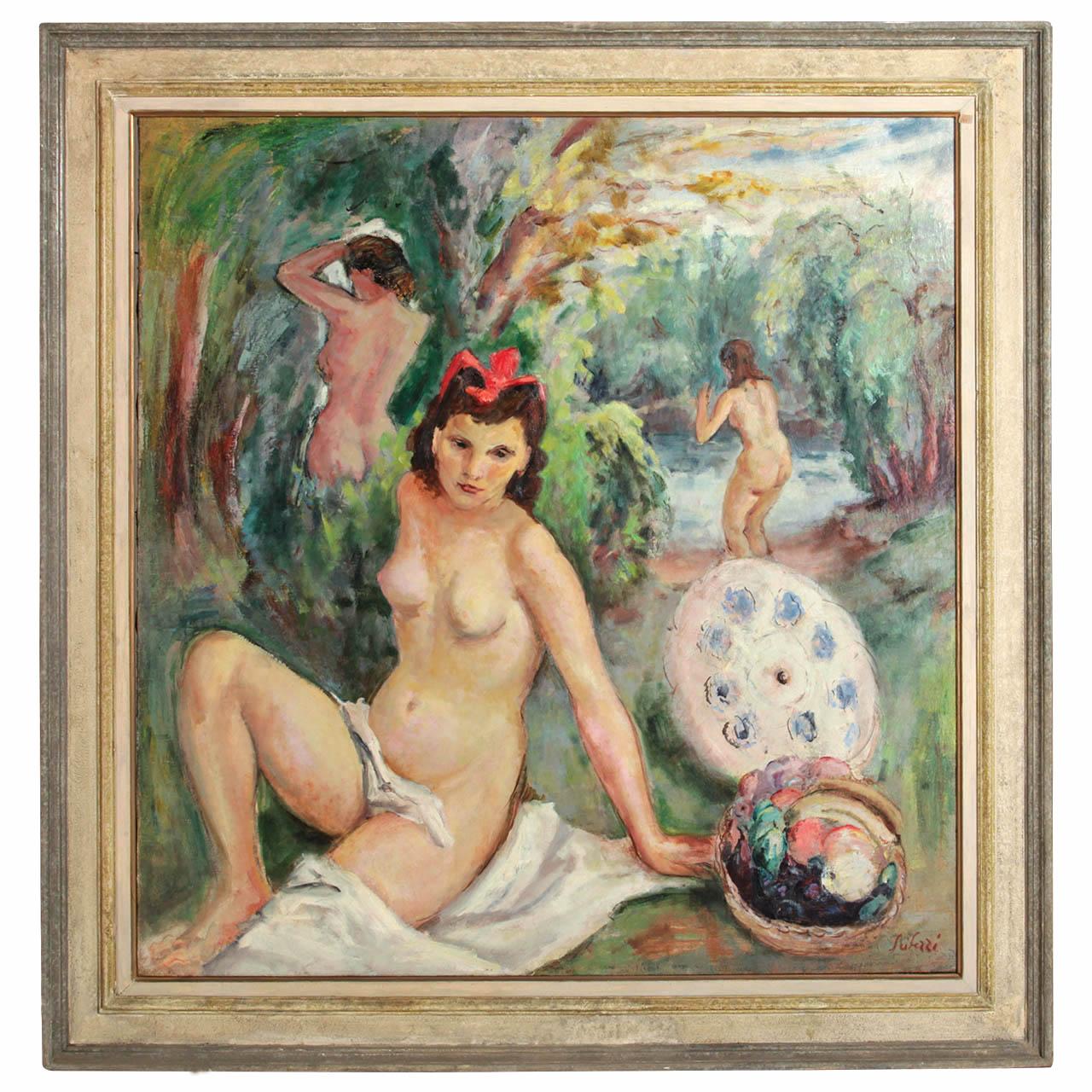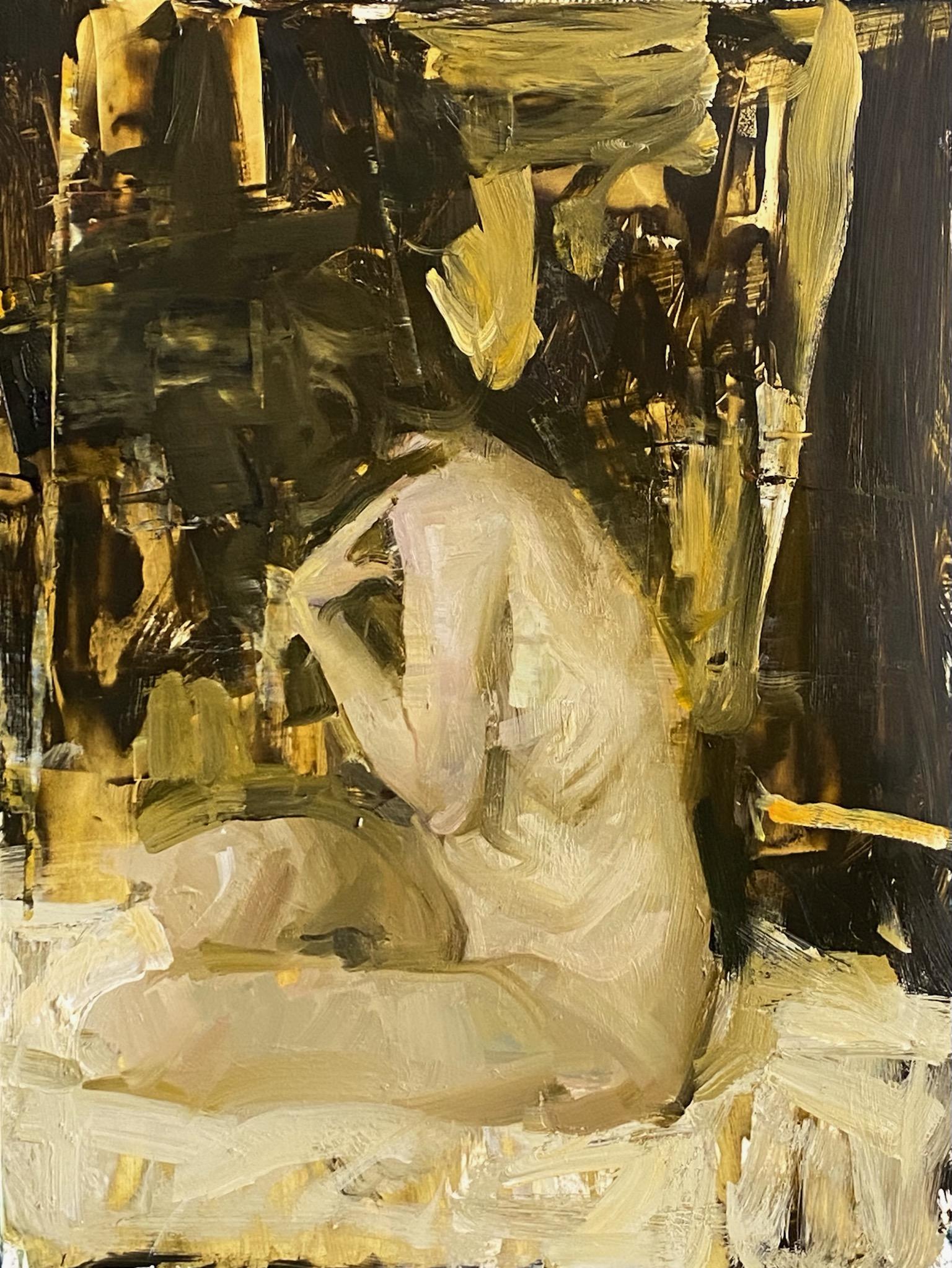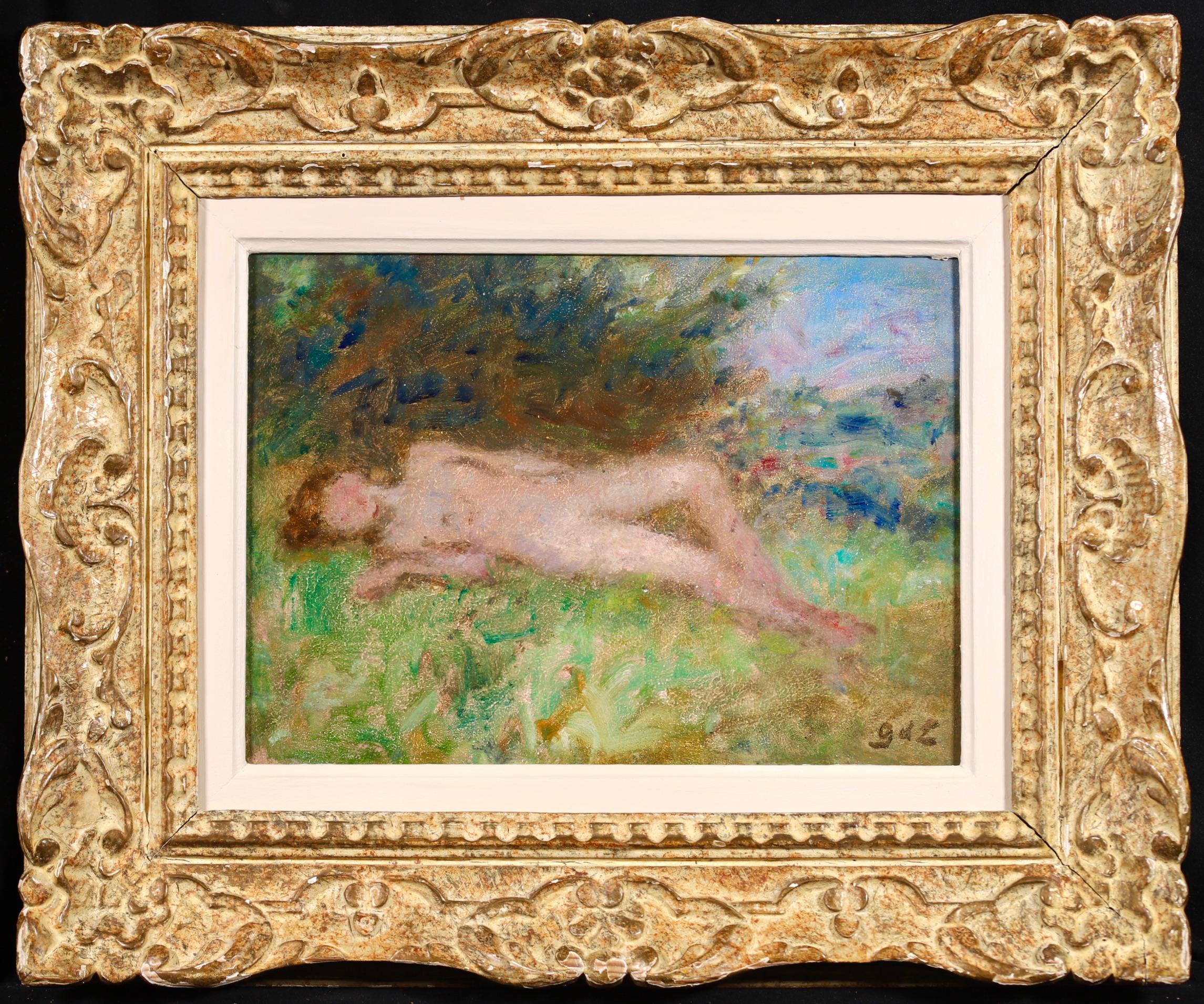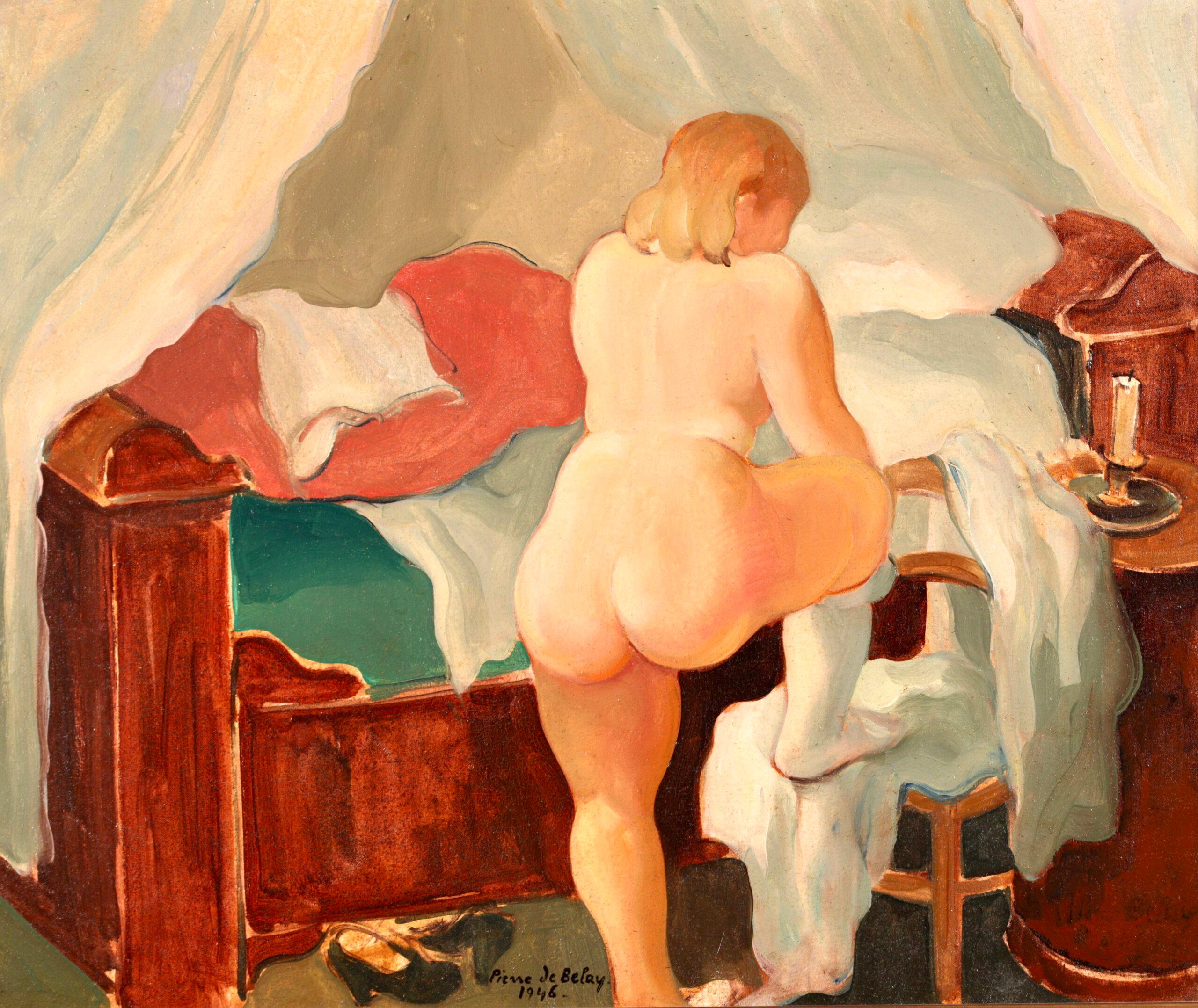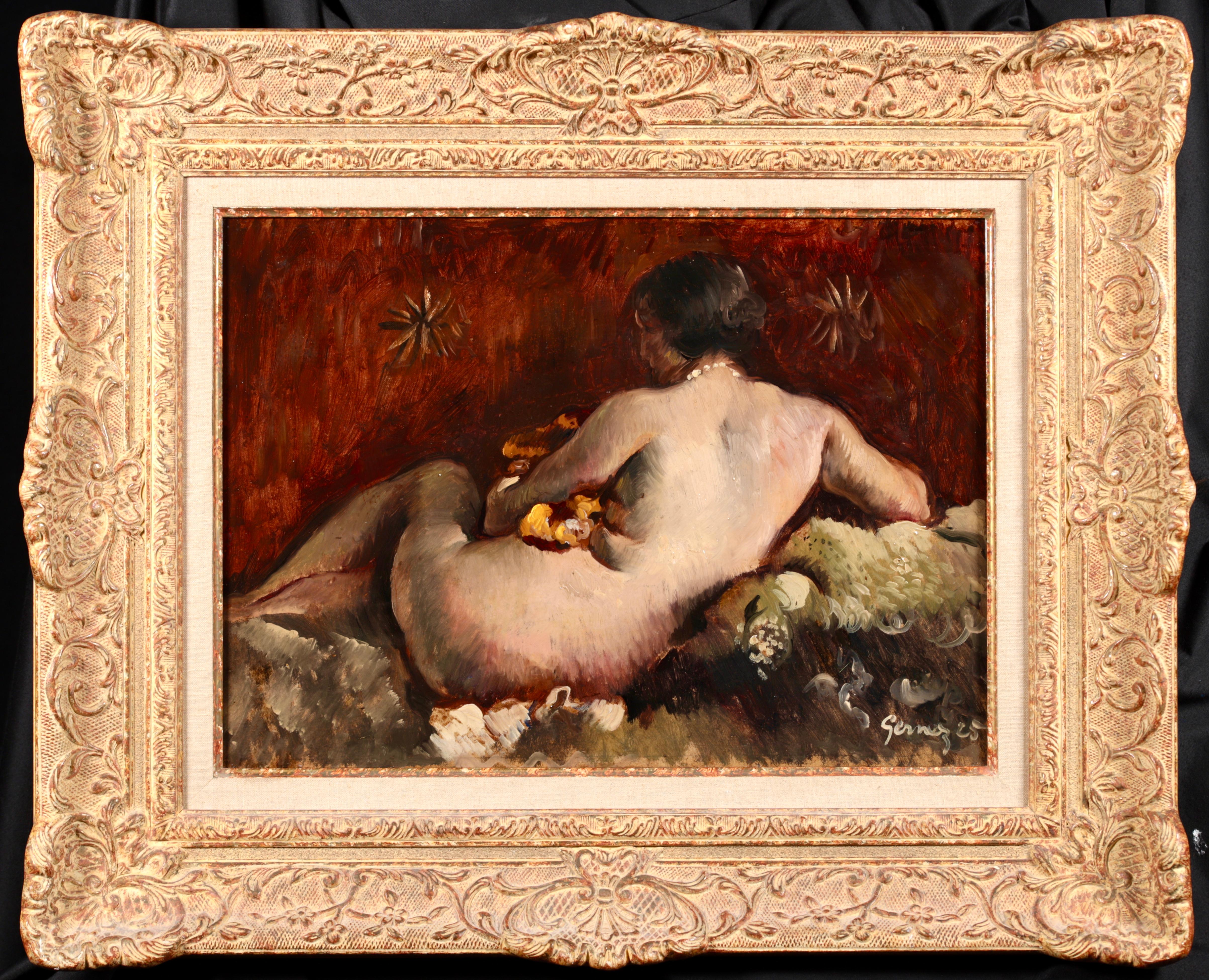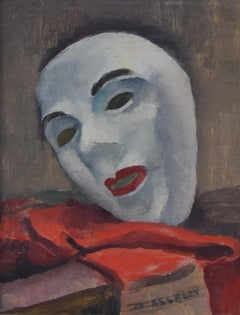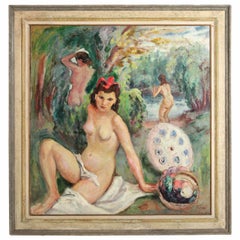
Alfred Marie Le Petit (1876-1953) Académie, a man half naked 1925, oil on canvas
View Similar Items
Want more images or videos?
Request additional images or videos from the seller
1 of 13
Alfred Marie Le Petit Alfred Marie Le Petit (1876-1953) Académie, a man half naked 1925, oil on canvas1925
1925
About the Item
- Creator:Alfred Marie Le Petit (1876 - 1953, French)
- Creation Year:1925
- Dimensions:Height: 31.5 in (80 cm)Width: 23.63 in (60 cm)
- Medium:
- Movement & Style:
- Period:
- Condition:
- Gallery Location:Paris, FR
- Reference Number:Seller: Inv 4261stDibs: LU111227684122
About the Seller
5.0
Platinum Seller
These expertly vetted sellers are 1stDibs' most experienced sellers and are rated highest by our customers.
Established in 2018
1stDibs seller since 2019
210 sales on 1stDibs
More From This SellerView All
- J J A Lecomte du Nouÿ (1842-1923) A shoulder and back study, oil paintingBy Jean-Jules-Antoine Lecomte du NouÿLocated in Paris, FRJean-Jules-Antoine Lecomte du Nouÿ (1842-1923) A shoulder and back study, oil study oil on canvas 34 x 19.5 cm In good condition, a few small inpainti...Category
1890s Romantic Nude Paintings
MaterialsOil
- Edmond Suau (1871-1929) Une Académie, Standing man, signed oil on canvasLocated in Paris, FREdmond Suau (1871-1929) Une Académie, Standing man, oil on canvas signed lower left 88 x 70 cm In quite good condition, some damages - small lacks of painting - in the lower part, ...Category
Early 1900s Realist Nude Paintings
MaterialsOil
$1,669 Sale Price24% Off - Maurice Asselin (1882-1947) Le Masque blanc, oil on canvas, signedBy Maurice AsselinLocated in Paris, FRMaurice Asselin (1882-1947) Le Masque blanc (The White Mask) Signed lower right, Oil on canvas 35 x 27 cm In good condition In its vintage frame : 51 x 43.5 cm The white mask is ...Category
1930s Post-Impressionist Still-life Paintings
MaterialsOil
- Maurice Asselin (1882-1947) Notre-Dame, Paris Oil on canvas, signedBy Maurice AsselinLocated in Paris, FRMaurice Asselin (1882-1947) Notre-Dame, Paris Signed lower left, Oil on canvas 50 x 61 cm In good condition In its original frame : 61 x 72 cm It is really interesting to reme...Category
1930s Post-Impressionist Figurative Paintings
MaterialsOil
- Léon Frédéric (1856-1940) Vallée de Nafraiture, Oil on panelBy Léon FrédéricLocated in Paris, FRLéon Frédéric (1856-1940) Vallée de Nafraiture signed with the estate stamp at the lower left Oil on canvas transfered on panel 29.5 x 44.55 cm Certific...Category
1930s Post-Impressionist Landscape Paintings
MaterialsOil
- Maurice Asselin (1882-1947) A Bunch of flowers in a vase, Signed oil on canvasBy Maurice AsselinLocated in Paris, FRMaurice Asselin (1882-1947) A Bunch of flowers in a vase Signed lower left Oil on canvas In good condition 46 x 38 cm Framed : 52 x 44 cm Maurice Asselin was born on June 24, 1882 ...Category
1930s Post-Impressionist Figurative Paintings
MaterialsOil
You May Also Like
- Post- Impressionist Venetian Nude Painting the Bathing Nymphs Signed SeibezziBy Fioravante SeibezziLocated in Rome, IT“Bathing Nymphs,” Oil on Canvas cm 115×110 with frame cm 140×135 Fioravante Seibezzi (Venice, 1906-1974), Post-Impressionist Venetian painter, he devoted himself to landscape en plein air, translating the immediacy of impressionism through pure, bright colors. His debut at the Venice Biennale in 1938, participates in the Quadrennial Roman (1931, 1935, 1948, 1951, 1959) and several exhibitions abroad. He received important awards during his long career. In 2010 the exhibition “Settepittori Settemondi. Palazzo Carminati La Bohème “at the Maximilian Tower of St. Erasmus, Venice, sponsored by the Cultural Paolo Rizzi in collaboration with the Institution Lagoon Park – City of Venice. One hundred works from a single collector who chose Aldo Bergamini, Neno Mori, Marco Novati...Category
20th Century Post-Impressionist Nude Paintings
MaterialsOil
- Post- Impressionist Venetian Nude Painting the Bathing Nymphs Signed SeibezziBy Fioravante SeibezziLocated in Rome, IT“Bathing Nymphs,” Oil on Canvas cm 115×110 with frame cm 140×135 Fioravante Seibezzi (Venice, 1906-1974), Post-Impressionist Venetian painter, he devoted himself to landscape en plein air, translating the immediacy of impressionism through pure, bright colors. His debut at the Venice Biennale in 1938, participates in the Quadrennial Roman (1931, 1935, 1948, 1951, 1959) and several exhibitions abroad. He received important awards during his long career. In 2010 the exhibition “Settepittori Settemondi. Palazzo Carminati La Bohème “at the Maximilian Tower of St. Erasmus, Venice, sponsored by the Cultural Paolo Rizzi in collaboration with the Institution Lagoon Park – City of Venice. One hundred works from a single collector who chose Aldo Bergamini, Neno Mori, Marco Novati...Category
20th Century Post-Impressionist Nude Paintings
MaterialsOil
- Post- Impressionist Venetian Nude Painting the Bathing Nymphs Signed SeibezziBy Fioravante SeibezziLocated in Rome, IT“Bathing Nymphs,” Oil on Canvas cm 115×110 with frame cm 140×135 Fioravante Seibezzi (Venice, 1906-1974), Post-Impressionist Venetian painter, he devoted himself to landscape en plein air, translating the immediacy of impressionism through pure, bright colors. His debut at the Venice Biennale in 1938, participates in the Quadrennial Roman (1931, 1935, 1948, 1951, 1959) and several exhibitions abroad. He received important awards during his long career. In 2010 the exhibition “Settepittori Settemondi. Palazzo Carminati La Bohème “at the Maximilian Tower of St. Erasmus, Venice, sponsored by the Cultural Paolo Rizzi in collaboration with the Institution Lagoon Park – City of Venice. One hundred works from a single collector who chose Aldo Bergamini, Neno Mori, Marco Novati...Category
20th Century Post-Impressionist Nude Paintings
MaterialsOil
- Post- Impressionist Venetian Nude Painting the Bathing Nymphs Signed SeibezziBy Fioravante SeibezziLocated in Rome, IT“Bathing Nymphs,” Oil on Canvas cm 115×110 with frame cm 140×135 Fioravante Seibezzi (Venice, 1906-1974), Post-Impressionist Venetian painter, he devoted himself to landscape en plein air, translating the immediacy of impressionism through pure, bright colors. His debut at the Venice Biennale in 1938, participates in the Quadrennial Roman (1931, 1935, 1948, 1951, 1959) and several exhibitions abroad. He received important awards during his long career. In 2010 the exhibition “Settepittori Settemondi. Palazzo Carminati La Bohème “at the Maximilian Tower of St. Erasmus, Venice, sponsored by the Cultural Paolo Rizzi in collaboration with the Institution Lagoon Park – City of Venice. One hundred works from a single collector who chose Aldo Bergamini, Neno Mori, Marco Novati...Category
20th Century Post-Impressionist Nude Paintings
MaterialsOil
- "Figure in Gold Abstraction", Oil PaintingBy Quang HoLocated in Denver, COQuang Ho's (US based) "Figure in Gold Abstraction" is an original, handmade oil painting that depicts a pale nude female model sitting among rumpled white fabric as she delicately pl...Category
2010s Post-Impressionist Figurative Paintings
MaterialsOil, Panel
- Le carnaval du sage by René MagritteBy René MagritteLocated in New Orleans, LARené Magritte 1898-1967 Belgian Le carnaval du sage (The Sage’s Carnival) Signed “Magritte” (lower right); titled and dated "Le carnaval du sage 1947" (en verso) Oil on canvas The enigmatic paintings of René Magritte have become some of the most familiar and celebrated of the Surrealist movement. Among the most influential of the Surrealist painters of the 20th century, Magritte is an artist of international renown, as beloved for his popular appeal as he is for the psychological intensity of his works. The present oil on canvas, entitled Le carnaval du sage, was executed in 1947 at the height of his career, and it is a tour-de-force example of the haunting, mysterious scenes that comprise his oeuvre. Painted in the years following the Second World War, Le carnaval du sage showcases several recurring themes from Magritte’s oeuvre. Chiefly, a juxtaposition between the visible and the hidden is keenly felt. Throughout his career, Magritte explores the psychological obsession with revealing what is hidden, particularly with regard to the human face. In his Le fils de l’homme, he obscures the face of a man in a bowler hat with an apple, while his Les amants (Metropolitan Museum of Art) conceals the faces of two lovers with white sheets. In Le carnaval du sage, Magritte juxtaposes the blatant nudity of his central figure by masking her face, simultaneously revealing and concealing her from the viewer. The work also incorporates two of Magritte’s most common tropes – the glass of water and the baguette. Lending the scene a strange sense of domesticity, they appear infinitely familiar and distinctly out of place, and thus heighten the uncanny effect of Magritte’s composition. In the background hovers a ghost obscured by a sheet, a figure which was of particular fascination to Magritte beginning in 1946. He once wrote to his fellow Surrealist Paul Nougé: "I saw in a dream an answer to the problem of the ghost: the traditional ghost draped...Category
20th Century Post-Impressionist Nude Paintings
MaterialsCanvas, Oil
Price Upon Request

